Dark Sky Parks have become increasingly popular as people like us seek to escape the light pollution pervasive in many urban areas. These parks provide an opportunity to experience the night sky in its entire splendor, free from artificial light interference. We stargazers and amateur astronomers gather at these locations to revel in celestial wonders and participate in educational and entertaining events centered around the cosmos.
When you visit a Dark Sky Park, you can enjoy amazing starry nights in a nocturnal environment specifically protected for its scientific, natural, educational, cultural heritage, and public enjoyment values. Several parks in the United States, such as Utah’s Arches National Park and Arizona’s Grand Canyon National Park, boast Dark Sky Park certifications and offer unique backdrops to enhance your stargazing experience.
In a nutshell:
- Dark Sky Parks provide a pristine environment for stargazing and appreciating the night sky unmarred by light pollution.
- These parks offer educational and entertaining events related to astronomy and celestial observation, enhancing the visitor experience.
- Some of the best Dark Sky Parks in the United States include Arches National Park, Grand Canyon National Park, and others in Utah and Arizona.
What Are Dark Sky Parks

International Dark-Sky Association
Founded in 1988, the International Dark-Sky Association (IDA) aims to protect the night skies from the adverse effects of light pollution. The IDA certified specific areas as Dark Sky Parks, where the quality of the starry nights is preserved, and artificial light is minimal.
Purpose and Goals
Dark Sky Parks have several purposes:
- Provide pristine night skies for astronomers and stargazers.
- Offer public enjoyment of celestial events.
- Enhance educational and scientific opportunities.
- Preserve nocturnal habitats for wildlife.
These parks encourage you to embrace natural darkness, a crucial element for various species’ survival, and unravel the universe’s wonders.
Conservation and Ecosystems
Artificial light disrupts the natural rhythm of ecosystems, affecting both plants and animals.
Dark Sky Parks play a vital role in:
- Protecting wildlife by maintaining natural circadian rhythms
- Reducing energy consumption and light pollution
- Supporting nocturnal species and their habitats
In the US, Dark Sky Parks are located within national parks, offering programs like astronomy festivals, full-moon walks, and astrophotography workshops.
Visiting one of these parks is not only a memorable experience but also a way to contribute to the protection of our delicate environment.
Now that you better understand Dark Sky Parks let’s explore some of the top locations to enjoy these breathtaking night views.
Best Dark Sky Parks: United States
From coast to coast, these extraordinary parks offer pristine celestial vistas where the splendor of the night sky unfolds in all its glory.
Prepare to be captivated by the majesty of the universe in these top Dark Sky Parks that will ignite your sense of wonder and leave you spellbound.
Acadia National Park

Acadia National Park stargazing offers you a remarkable cosmic journey. This pristine wilderness embraces stargazers with incredible dark skies along Maine’s rugged coastline.
Experience the awe from Cadillac Mountain, offering an elevated vantage point for uninterrupted celestial wonders. Seek serenity on Schoodic Peninsula, a secluded sanctuary to explore the universe undisturbed. These cherished locations, free from light pollution, provide an ideal stage for stellar performances.
Watch as constellations, meteors, and the ethereal Milky Way illuminate the night sky, igniting a sense of wonder that knows no bounds.
FREE STARGAZING CHECKLIST
My 5-page Stargazing Checklist will enhance your astronomical observations.
Follow this free checklist to navigate the night sky with confidence, clarity, and a sense of preparedness for a rewarding stargazing experience.

Anza-Borrego Desert State Park
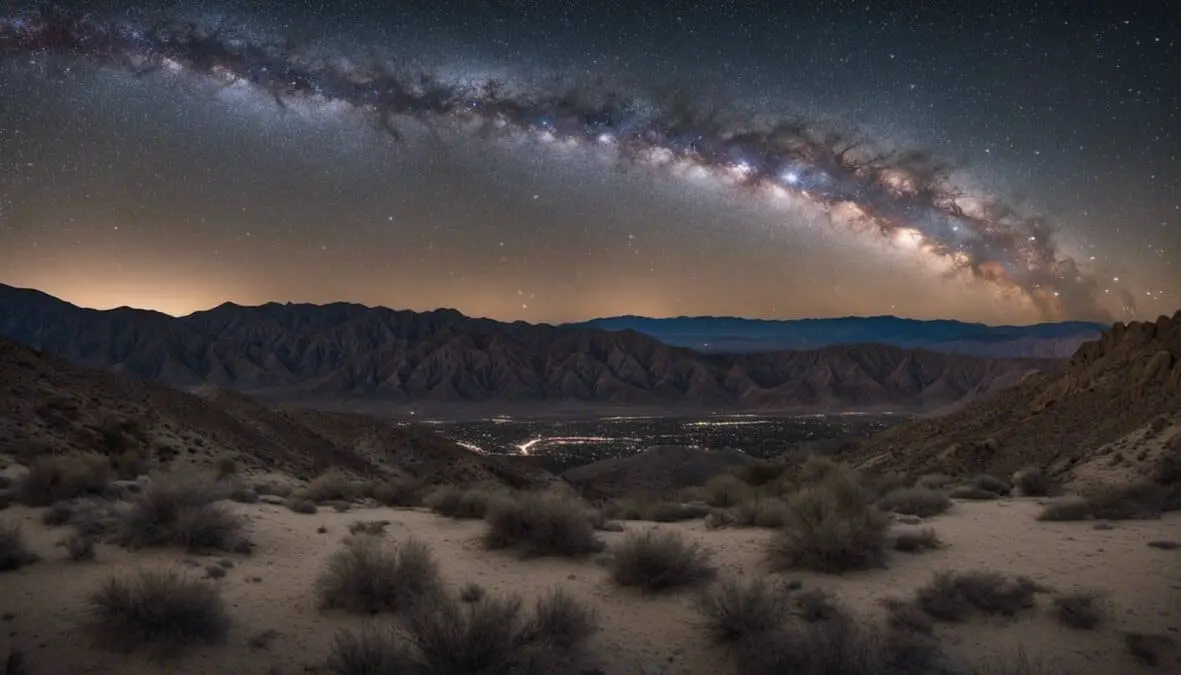
Anza Borrego Stargazing invites you to embark on an extraordinary celestial journey within the serene expanse of Anza-Borrego Desert State Park, nestled in east San Diego County. This enchanting destination boasts the prestigious title of an International Dark Sky Community, where pristine night skies come to life.
While exploring this celestial haven, you’ll discover two exceptional stargazing locations: the captivating Palm Oases and the awe-inspiring Mountain Ranges.
Arches National Park
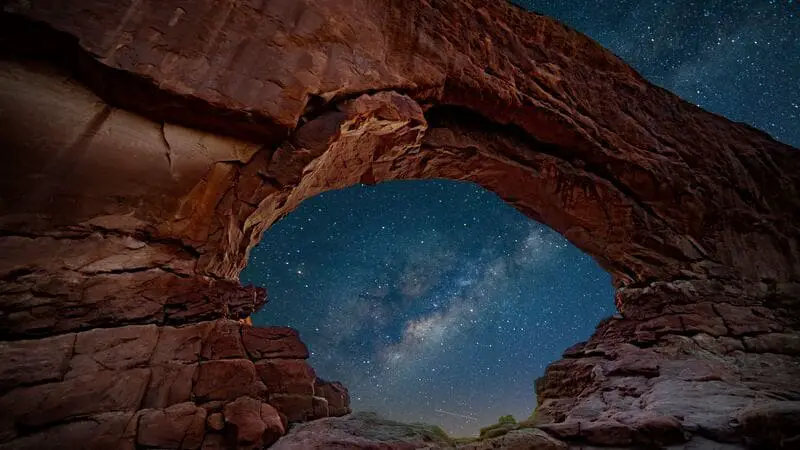
Stargazing Arches National Park is a truly enchanting experience that invites you to connect with the universe in one of the world’s most captivating natural settings. As the sun sets over the rugged landscapes of Utah, the park’s transformation into a celestial wonderland unfolds.
At Panorama Point and Garden of Eden Viewpoint, you’ll find yourself under a blanket of stars, witnessing the cosmic ballet of constellations, planets, and the Milky Way.
Big Bend National Park
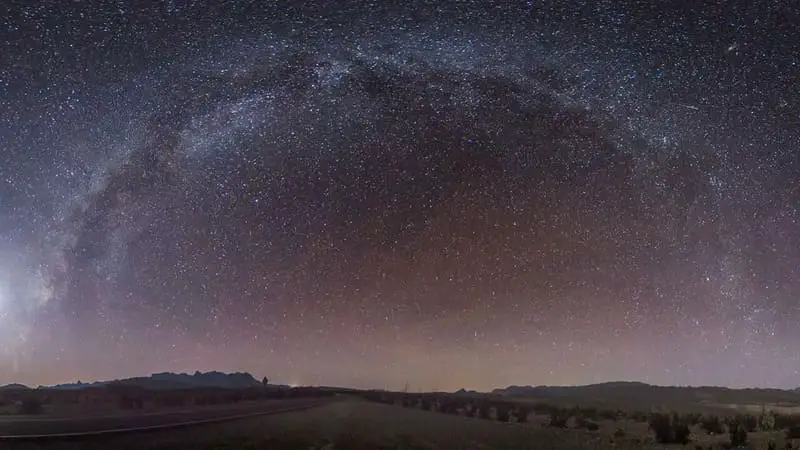
Embark on a celestial odyssey by stargazing Big Bend National Park, Texas. Witness awe-inspiring wonders from Emory Peak‘s lofty summit. Seek tranquility at Santa Elena Canyon, a secluded refuge. Here, amidst pristine night skies, constellations, and the ethereal Milky Way, paint a mesmerizing tableau, leaving an indelible mark on your soul.
Big Bend National Park in Texas is a great place to see the night sky in the United States. Big Bend is known for its beautiful scenery, and its clear night skies make it a great place for people and astrophotographers.
Because the park is far from big towns, there isn’t much light pollution there. This makes it possible to see amazing things in the sky. The park’s efforts to keep its natural darkness have led to it being named an International Dark Sky Park, so its beautiful night time views will be preserved. People can see how bright the Milky Way is, how many stars shine, and even things like meteor showers and outstanding formations.
Whether you’re interested in astronomy or just want to meet the stars magically, Big Bend National Park will give you an unforgettable and complete dark sky experience.

By Nick Edwards
Managing Director, Snowfinders
Black Rock Desert
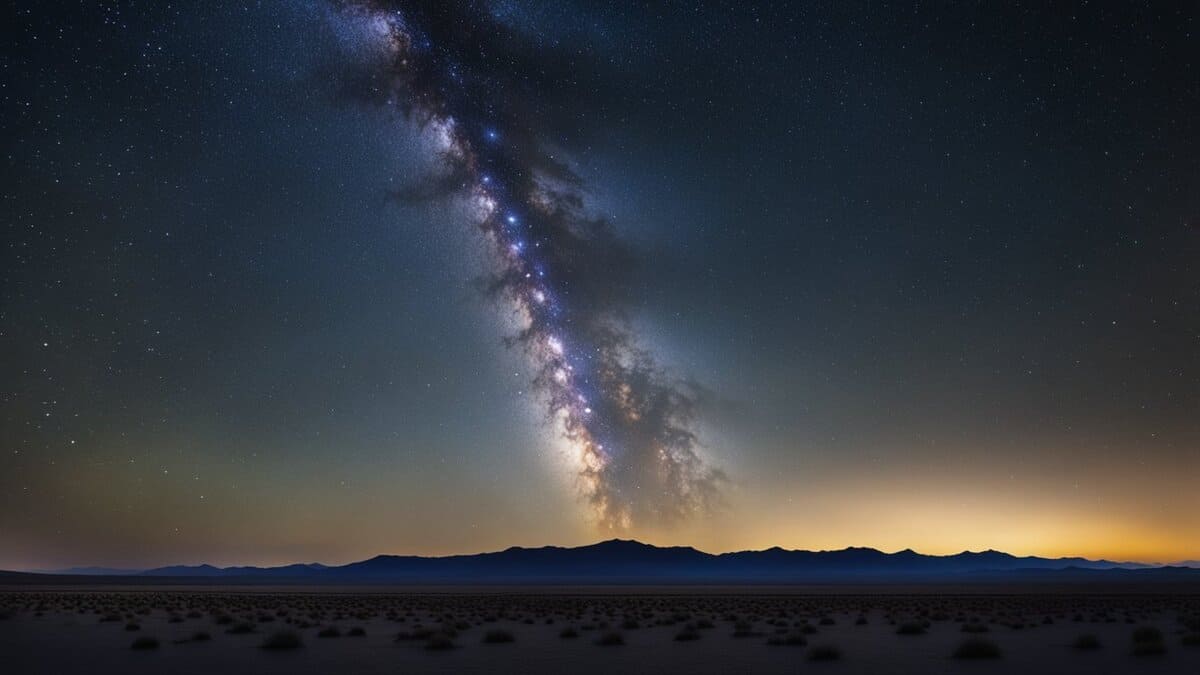
The Black Rock Desert in Nevada, famous for the Burning Man festival, is also an exceptional dark sky site. This vast, flat expanse allows unobstructed views of the night sky. The absence of nearby cities ensures dark skies, ideal for observing deep-sky objects and meteor showers.
The desert’s unique landscape adds to the allure, making it a favorite among astrophotographers. Its accessibility during dry seasons makes it a popular destination for night sky enthusiasts.
Bryce Canyon National Park
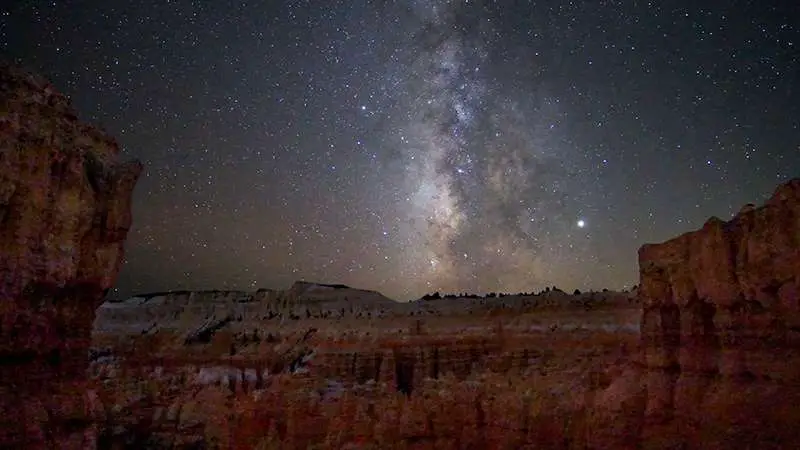
Welcome to the enchanting Bryce Canyon National Park, mesmerizing beauty in Utah’s rugged landscape. Explore the fascinating geological formations known as hoodoos and witness the celestial wonders that adorn the night sky above.
From the panoramic views of Sunset Point and Inspiration Point, be spellbound by a symphony of stars that illuminates the majestic amphitheaters. Immerse yourself in the harmony of nature’s grandeur and the cosmic marvels that await you in Bryce Canyon National Park.
Capulin Volcano Dark Sky Park
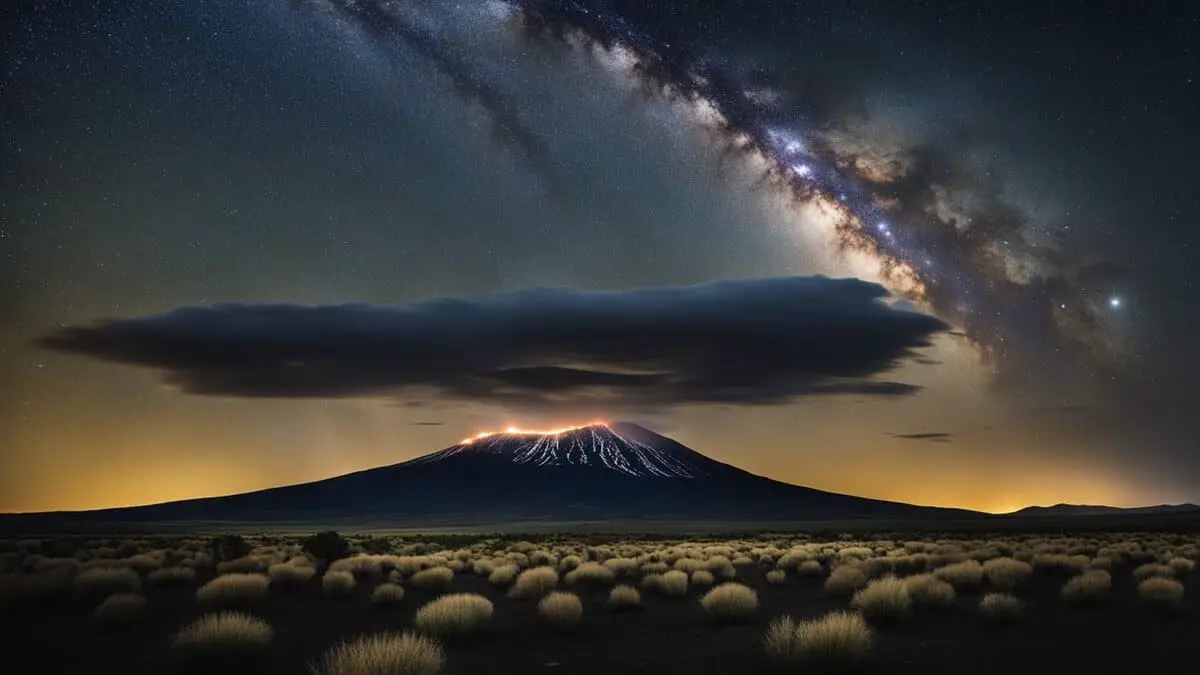
Capulin Volcano Dark Sky Park in New Mexico is a stargazing paradise where the night sky meets the remnants of volcanic activity. As you stand atop the extinct cinder cone volcano, the universe unfolds above you in an awe-inspiring display.
From the rim of Capulin Volcano, experience a 360-degree view of the night sky, unobstructed by terrain or light pollution. The Milky Way appears vivid and detailed, with the park’s dark skies stretching across the horizon. Capulin’s dark skies make it an ideal location to witness meteor showers, with meteors streaking brightly across the sky.
Cherry Springs State Park

Cherry Springs State Park Stargazing is an invitation to a celestial spectacle. Within this Pennsylvania haven, the magic of the night sky unfolds. Traverse tranquil forest trails, immersing yourself in the natural beauty that thrives here. As you ascend to the overlooks, breathtaking vistas remind you of the expansiveness that surrounds.
But it’s when the sun sets and the night takes over that the true enchantment begins. Head to the Night Sky Public Viewing Area, where a cosmic masterpiece reveals itself. Stars twinkle in the darkness, narrating tales of distant galaxies. Alternatively, find yourself at the Overnight Astronomy Observation Field, where the symphony of the cosmos is on full display.
One recommended dark-sky location in the United States is Cherry Springs State Park in Pennsylvania. Known for its Dark Sky Park designation, the park offers exceptional stargazing because of its remote location and minimal light pollution. It provides designated stargazing areas, astronomy programs, and an observatory for public use, making it a prime spot for stargazing enthusiasts.

By Aviad Faruz
CEO, Know Mastery
Copper Breaks State Park
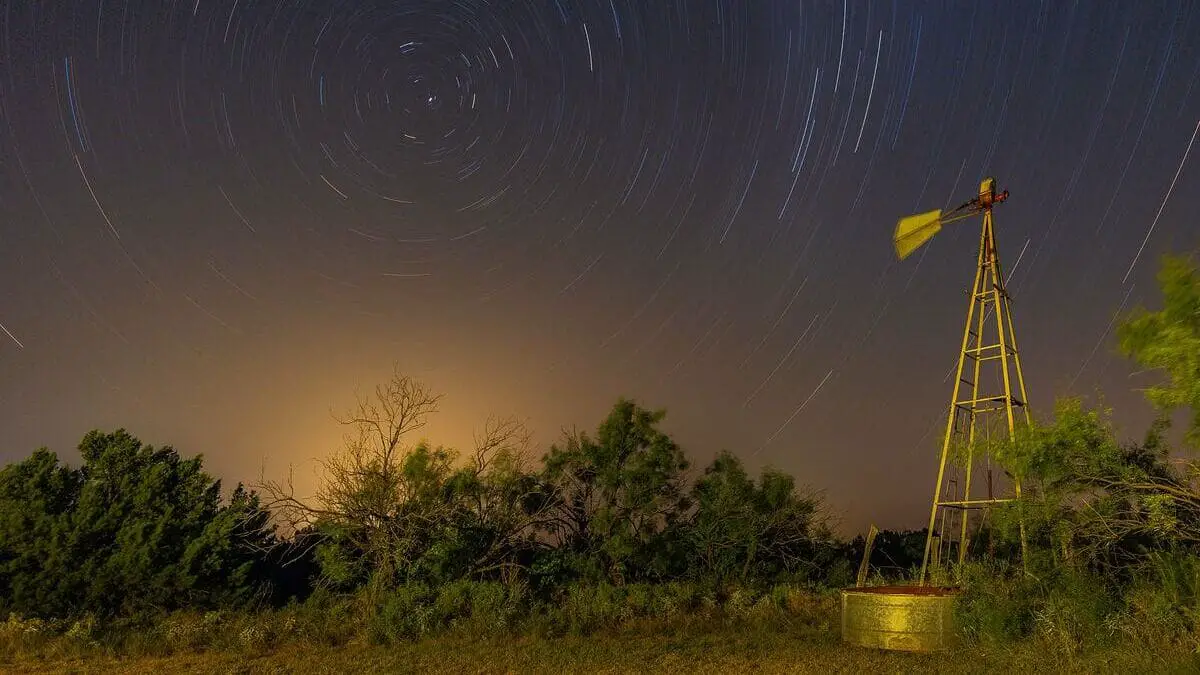
Copper Breaks State Park stargazing is an enchanting odyssey into the cosmos, where the night sky unfolds in all its celestial glory. Nestled in the heart of Texas, this park has earned its stripes as an International Dark Sky Park, offering some of the most pristine and unobstructed views of the heavens.
Picture yourself at the tranquil Big Pond, where the starry canopy mirrors itself in serene waters, blurring the line between earth and sky. Alternatively, take on the captivating Juniper Ridge Nature Trail, a challenging hike that rewards you with front-row seats to the cosmic theater above. At Copper Breaks State Park, you’ll not only gaze at stars but touch the very essence of the universe, forging a profound connection between our small world and the boundless cosmos, leaving you with memories that shimmer like the stars themselves.
Cosmic Campground Dark Sky Sanctuary

The Cosmic Campground Dark Sky Sanctuary offers an unparalleled stargazing experience in New Mexico‘s Gila National Forest. This sanctuary stands out as a unique destination in North America, one of the few International Dark Sky Sanctuaries providing exceptional night sky views in the lower 48 states. Far from significant artificial light sources, it guarantees crystal-clear views of constellations, planets, and the Milky Way.
Death Valley National Park
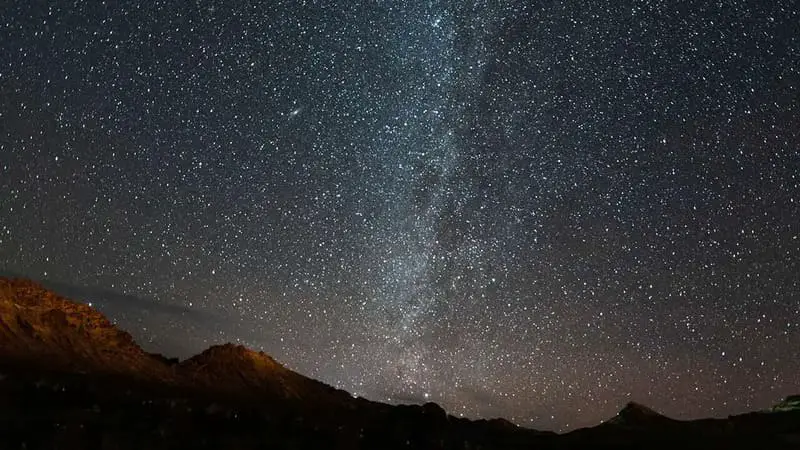
Discover the awe-inspiring allure of Death Valley National Park, a stunning desert oasis in California. Unveil the secrets of this extraordinary landscape as you wander through the mesmerizing Badwater Basin, the lowest point in North America. Ascend to the lofty heights of Dante’s View, where panoramic vistas offer an unparalleled perspective of the vastness surrounding you.
In this remarkable expanse of natural beauty, witness the celestial wonders above from Zabriskie Point and Telescope Peak as the night sky reveals a tapestry of stars that will leave you breathless. Welcome to Death Valley National Park, where rugged landscapes and celestial splendor intertwine to create an unforgettable experience.
Enchanted Rock State Natural Area

Enchanted Rock Stargazing is a celestial wonder that ignites the imagination and reconnects us with the cosmos. Beneath the vast Texas sky, this natural sanctuary offers not only breathtaking views but also the opportunity to witness the brilliance of the Milky Way, thanks to its designation as an International Dark Sky Park.
With minimal light pollution and over 400 acres of stargazing terrain, Enchanted Rock invites you to escape the hustle of daily life and find solace in the beauty of the night sky. It’s a place where you can revel in the awe-inspiring fact that you’re gazing upon stars that have traveled light-years to paint the canvas of our dreams.
Grand Canyon National Park
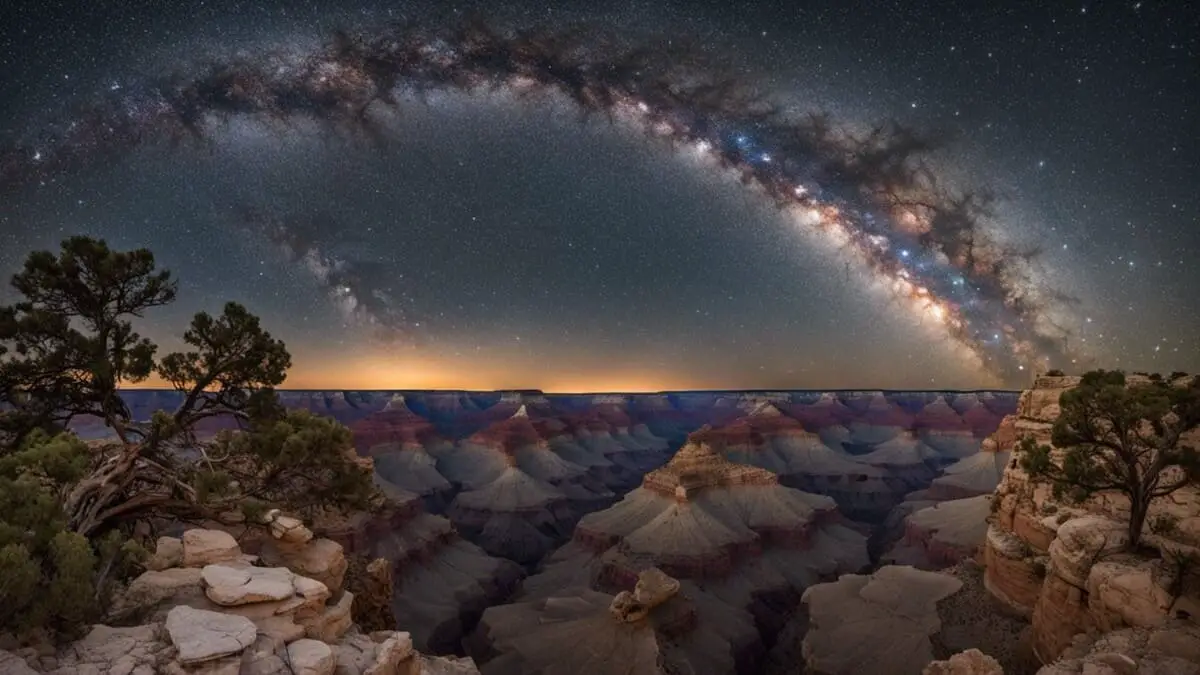
Grand Canyon Stargazing offers a celestial experience like no other. Beneath the majestic Arizona skies, the Grand Canyon transforms into a cosmic theater, where stars illuminate the depths of time and space.
Mather Point and the North Kaibab Trail serve as prime locations for stargazing. Here, you’ll witness the Milky Way’s grandeur and meteor showers painting the night canvas. Grand Canyon Stargazing invites you to embrace the wonder of our universe and cherish the timeless beauty of this natural wonder.
I would highly recommend the Grand Canyon National Park in Arizona. It is designated as an International Dark Sky Park, which means it offers excellent opportunities for stargazing due to minimal light pollution.
The vast, remote landscape of the Grand Canyon provides stunning views of the night sky, including the Milky Way and many constellations. It often hosts special astronomy programs and events to enhance the stargazing experience, making it a top destination for both amateur and experienced astronomers looking to enjoy the beauty of the cosmos.

By Ann Young
CEO, Fix The Photo
Great Basin National Park

Welcome to the enchanting realm of Great Basin National Park, a hidden gem nestled in Nevada’s majestic landscape.
Delve into the secrets of this extraordinary wilderness as you ascend to the summit of Wheeler Peak, where panoramic vistas reveal the breathtaking expanse of the surrounding countryside. At Baker Creek and Great Basin Observatory, embrace the celestial wonders that grace the night sky as constellations and meteors dance across the canvas above. Immerse yourself in the harmony of nature’s splendor and the cosmic tapestry that awaits you in Great Basin National Park, where adventure and celestial beauty intertwine in perfect balance.
Haleakala National Park

Experience the ethereal beauty of Haleakala National Park, a beautiful sanctuary nestled in the heart of Maui, Hawaii. Embark on a journey to the summit of Haleakala, where the Haleakala Observatory and Red Hill offer panoramic views of the island and the celestial wonders above.
Witness the breathtaking sunrise or gaze upon the star-filled night sky as the morning’s colors and the stars’ brilliance create a mesmerizing spectacle. Immerse yourself in the enchantment of Haleakala National Park, where nature’s grandeur and celestial marvels intertwine, leaving an indelible imprint on your soul.
Joshua Tree National Park
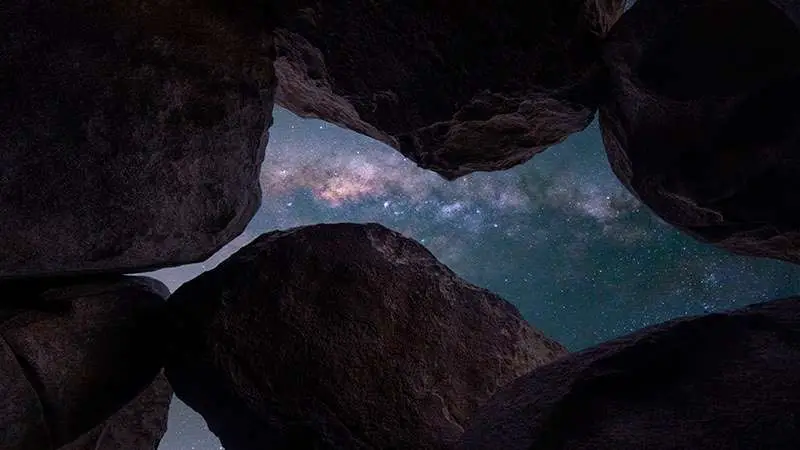
Enter the surreal realm of Joshua Tree National Park, an enchanting desert wonderland in Southern California. Roam amidst the iconic Joshua trees and unique rock formations that grace the landscape. At Keys View and Hidden Valley, embrace the vast expanse of the desert and the celestial wonders that adorn the night sky.
Marvel at the brilliance of stars and constellations as they paint a mesmerizing tableau above this enchanting wilderness. Discover the harmonious convergence of natural beauty and cosmic splendor in Joshua Tree National Park, where dreams and stargazing adventures come alive.
- Best Time To Go To Joshua Tree For Stargazing
- Is Joshua Tree free at night?
- Can you still see stars with a full moon in Joshua tree?
- Is Joshua Tree good for stargazing?
- When can I see the Milky Way in Joshua Tree?
Massacre Rim Dark Sky Sanctuary
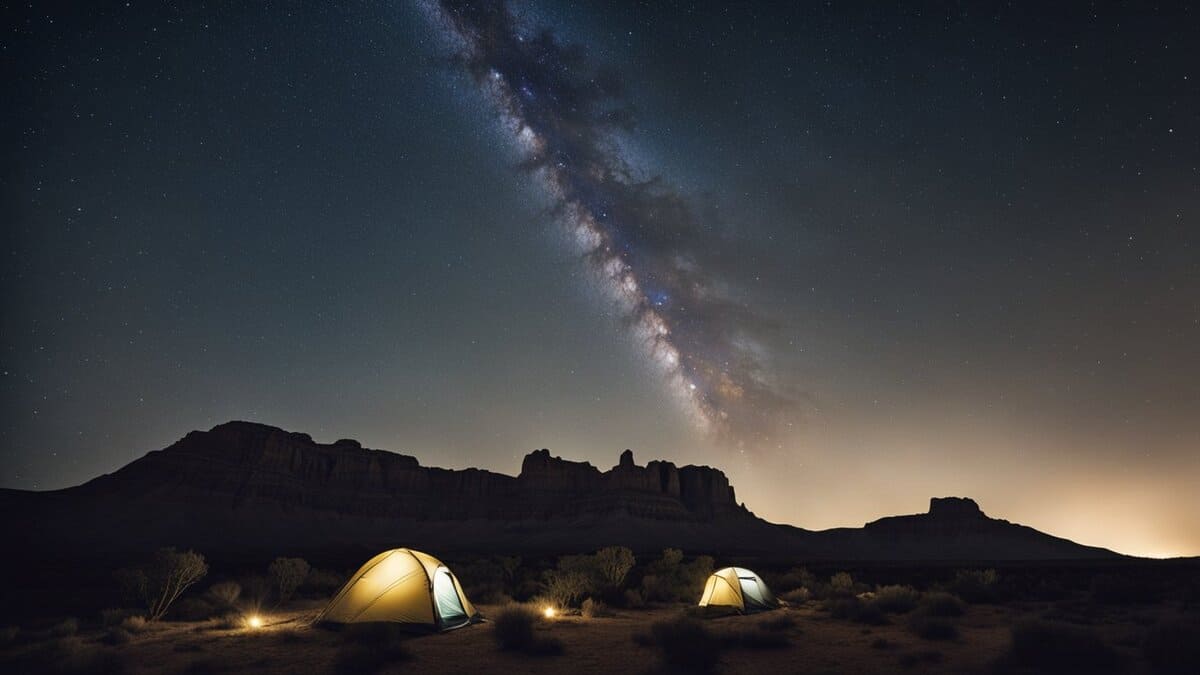
Embark on a celestial adventure at Massacre Rim Dark Sky Sanctuary, a hidden gem in the remote wilderness of Nevada. This sanctuary, recognized for its pristine night skies, offers a profound sense of solitude and connection with the cosmos. As one of the darkest places in the United States, it’s a haven for stargazers and astrophotographers.
Here, you’ll experience the night sky in its purest form, with the Milky Way stretching across the horizon and countless stars twinkling above. The lack of light pollution means you’ll see celestial sights rarely visible in more populated areas. This sanctuary isn’t just a place; it’s a journey into the heart of the universe.
Olympic National Park
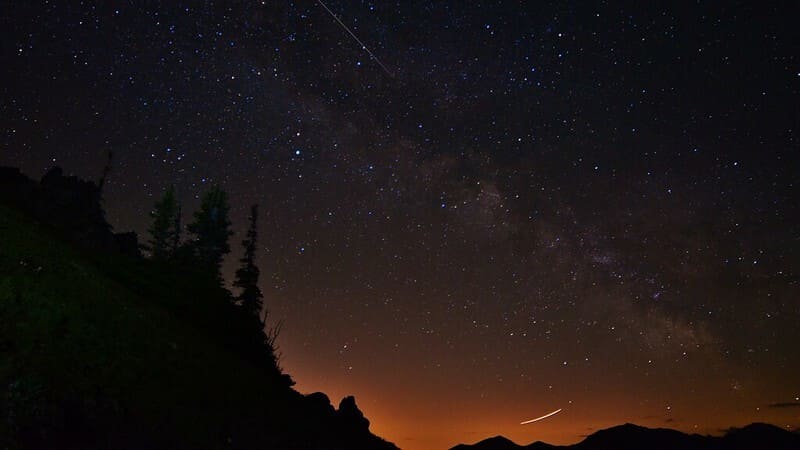
Welcome to the enchanting Olympic National Park, a pristine haven nestled in the lush landscapes of Washington State. Immerse yourself in the awe-inspiring beauty of ancient rainforests, majestic mountains, and rugged coastlines. Witness the breathtaking vistas unfolding before you at Hurricane Ridge and Rialto Beach.
As night falls, indulge in stargazing wonders where the dark skies above reveal a celestial symphony of stars and galaxies. Embrace the harmony of nature’s magnificence and the cosmic tapestry that unfolds above in Olympic National Park. This captivating destination will ignite your sense of wonder and leave you spellbound.
Oracle State Park
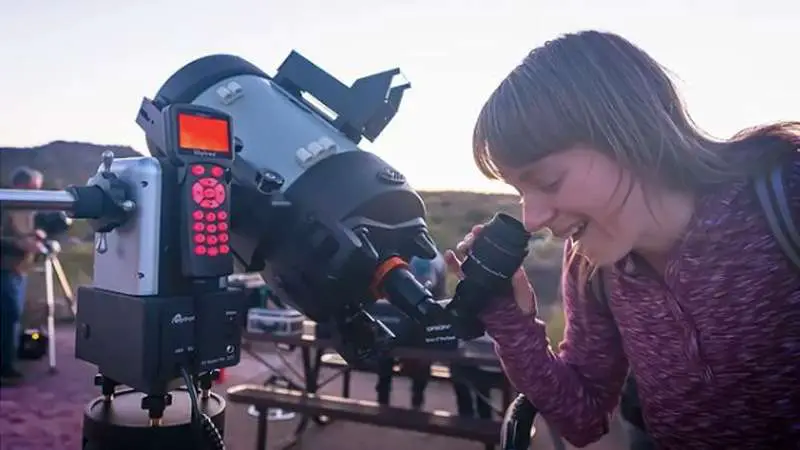
Oracle State Park stargazing in Arizona is an awe-inspiring experience that connects you to the limitless wonders of the cosmos. Beneath the desert sky, you’ll find boundless inspiration as the stars twinkle, reminding you of the endless possibilities in this world and beyond. It’s a tranquil oasis that encourages dreams, fuels curiosity, and fosters belief in the incredible potential that lies within us all.
Red Rock Canyon
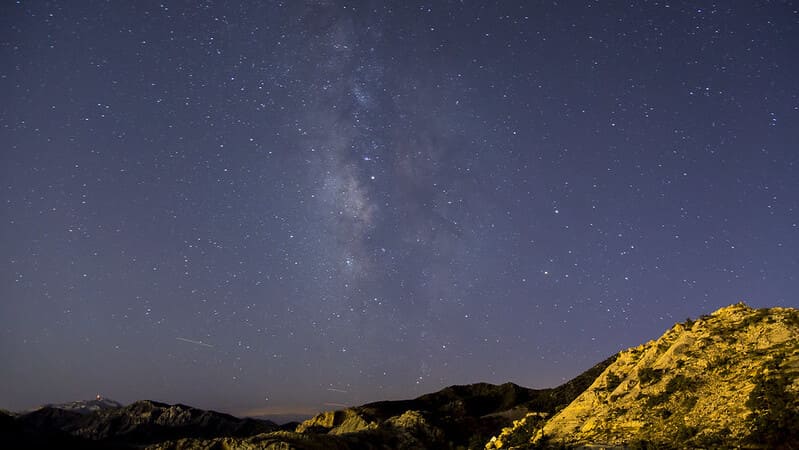
Embark on a captivating desert escape at Red Rock Canyon, a natural wonder outside vibrant Las Vegas. Immerse yourself in the striking beauty of towering red rock formations and rugged desert landscapes. Traverse the scenic trails that wind through this enchanting oasis, revealing hidden treasures at every turn.
At Calico Basin and Red Spring, marvel at the surreal rock formations and vibrant flora that thrive in this arid wilderness. As the day goes to night, embrace the magic of stargazing under the pristine desert skies, where constellations and the Milky Way illuminate the darkness. Rediscover the harmony of nature’s artistry and the celestial wonders that grace the skies above in the mesmerizing Red Rock Canyon.
Rocky Mountain National Park

Welcome to the enchanting world of Rocky Mountain National Park stargazing, where the night sky becomes a canvas painted with a thousand stars, and the universe unfolds its secrets in a breathtaking display.
Nestled amidst the rugged beauty of the Rockies, this celestial playground offers an opportunity like no other to connect with the cosmos and find inspiration in the vastness of space.
As you gaze upwards, you’ll discover that the universe has a way of reminding us of our own small place in the grand scheme of things, inspiring us to dream big and explore the limitless possibilities that lie beyond.
Tonopah Stargazing Park
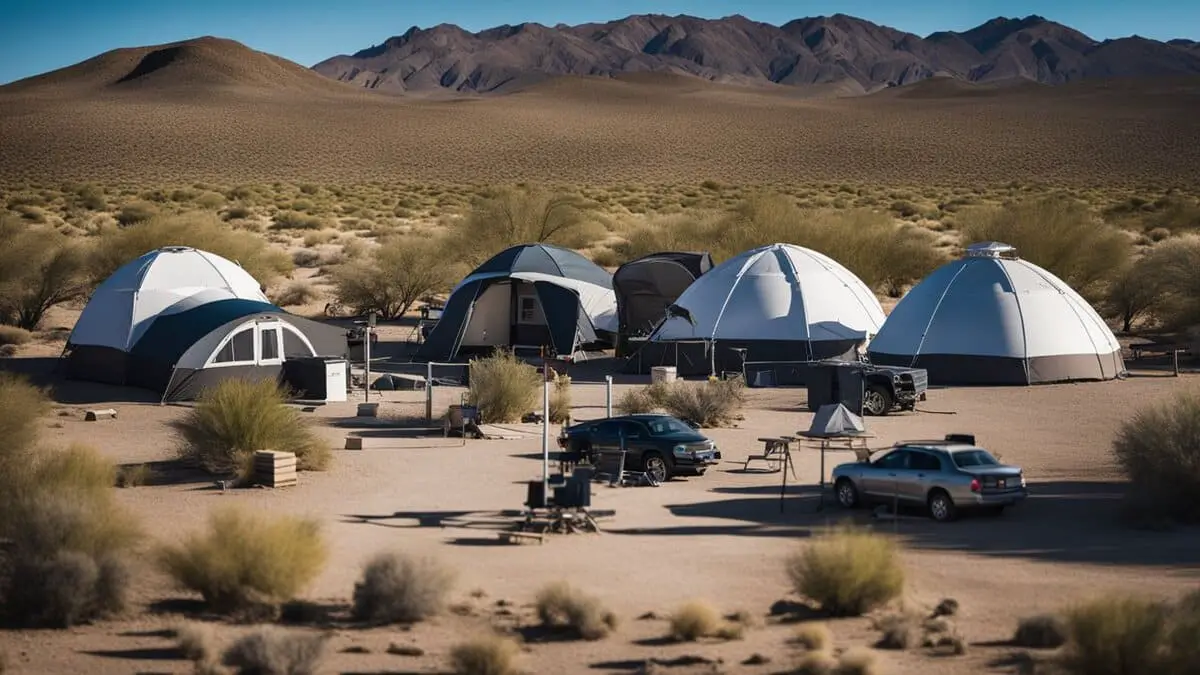
Discover the celestial wonders at Tonopah Stargazing Park, a hidden gem located in the heart of Nevada. Known for its remarkably dark skies, this park offers a stargazing experience like no other. Surrounded by the serene Nevada landscape, Tonopah is the perfect escape from the city’s hustle and bustle.
As night descends, the sky transforms into a star-studded spectacle. Here, you can gaze upon the Milky Way with unparalleled clarity, making it an ideal spot for both amateur and seasoned astronomers. The park’s remote location ensures minimal light pollution, allowing for a truly immersive stargazing experience. Embrace the tranquility of Tonopah Stargazing Park and let the cosmic panorama inspire your astral journey.
White Sands National Park

White Sands National Park, renowned for its vast gypsum dune field, offers a unique stargazing experience. The park’s remote location in New Mexico minimizes light pollution, revealing a vibrant night sky.
You can marvel at the Milky Way and seasonal meteor showers. The stark white dunes provide a surreal backdrop, enhancing the visual experience. Stargazing events hosted by park rangers offer guided observations of celestial wonders.
Yellowstone National Park
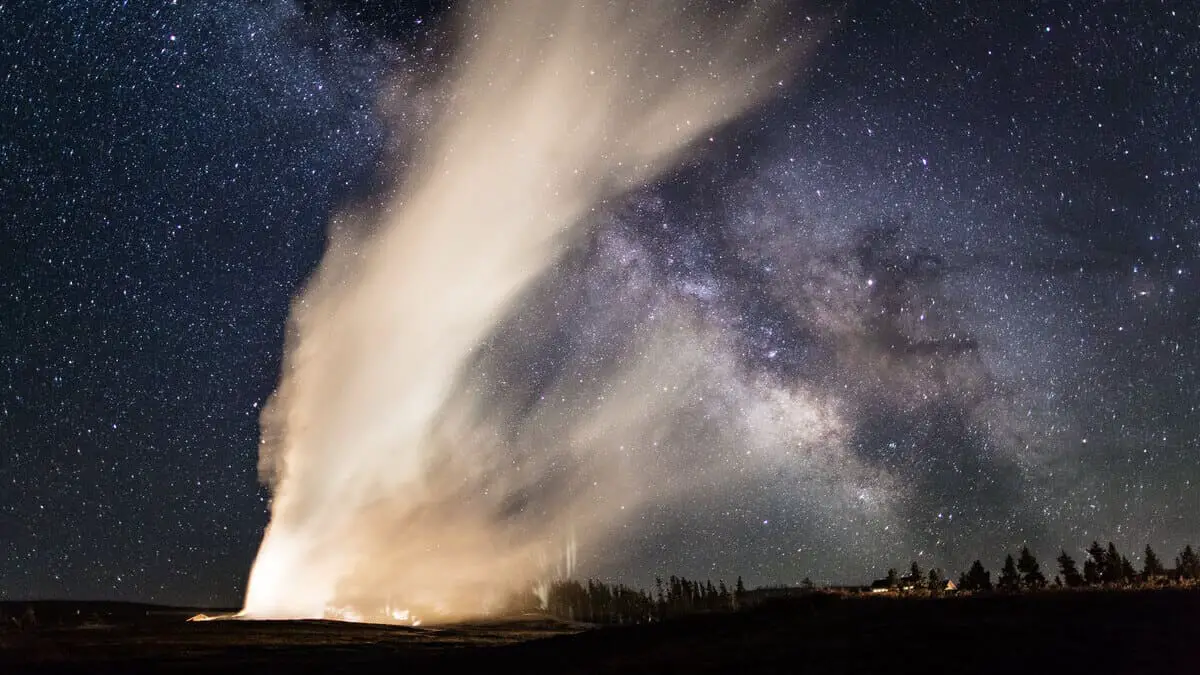
Yellowstone Stargazing is a source of profound inspiration. Amidst the pristine wilderness, it offers a chance to connect with the cosmos, providing peace and perspective.
Notable spots for this celestial journey include Hayden Valley, where the Yellowstone River mirrors the stars, and Old Faithful, where the wonders of Earth and the universe converge. Yellowstone’s blend of earthly beauty and cosmic grandeur leaves an indelible mark on the soul.
Zion National Park
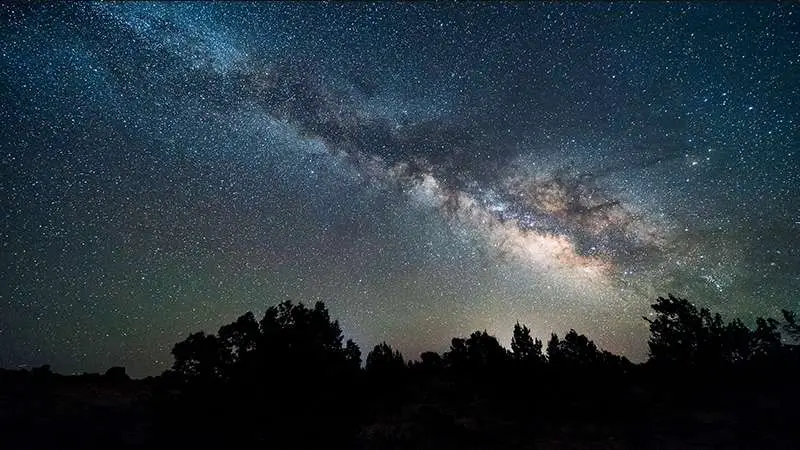
Welcome to the majestic Zion National Park, a breathtaking sanctuary nestled in the red rock canyons of southern Utah. Be awe-inspired by the towering cliffs, emerald pools, and cascading waterfalls that define this natural masterpiece. Traverse the awe-inspiring trails that lead to hidden gems such as Angel’s Landing and The Narrows, where adventure and wonder converge.
As the sun sets, gaze upward at the dark skies above and witness a celestial spectacle unfold. In the serene beauty of Zion National Park, constellations and shooting stars paint a mesmerizing canvas, igniting a sense of awe and deep connection with the universe. Immerse yourself in the harmonious symphony of nature’s grandeur and the celestial marvels that grace the skies above for a truly unforgettable experience.
Activities and Events at Dark Sky Parks
Stargazing Events
At Dark Sky Parks, you can attend stargazing events, where experienced astronomers and volunteers offer guidance on using telescopes and locating celestial objects. Bring your telescope or share one provided by the park. Remember, it’s essential to reserve these events as they can fill up quickly.
Star Parties
Star parties are fun, social gatherings where you can meet other stargazers. Usually held during the new moon phases, these events often have:
- Multiple telescopes set up for public viewing
- Talks from astronomers and NASA experts
- Hands-on activities and demonstrations
Photography Workshops
Dark sky parks regularly offer photography workshops to capture the beauty of the night sky. Learn from experienced astrophotographers the tips and tricks to take stunning shots of the Milky Way, star trails, and nocturnal landscapes.
Astronomy Festivals
If you’re a fan of stargazing, you don’t want to miss astronomy festivals. These events typically feature:
- Guided constellation tours
- Informative lectures and presentations by renowned astronomers
- Family-friendly activities and games
For example, the Bryce Canyon Astronomy Festival usually happens in June.
Ranger Talks
Park rangers often give talks at Dark Sky Parks, where they share their knowledge about the night sky, celestial events, and even local wildlife. These talks can be an excellent way to learn more about the park’s unique features and how they contribute to preserving dark skies.
Constellation Tours
Join a guided constellation tour to explore the stories and myths behind the stars. Tours often use laser pointers to help you identify different constellations, their histories, and how they relate to various cultures.
Lectures
Many Dark Sky Parks offer educational lectures for those interested in deepening their understanding of astronomy. These presentations cover various topics, from space exploration to the science behind celestial phenomena.
Frequently Asked Questions
What makes a park qualify as a Dark Sky Park?
To qualify as a Dark Sky Park, a park must possess an exceptional quality of starry nights and a nocturnal environment protected for scientific, natural, educational, cultural heritage, and public enjoyment.
What activities can I do at a Dark Sky Park?
At a Dark Sky Park, you can enjoy a wide range of activities under the stars, such as stargazing with binoculars or telescopes, taking night photography, attending educational programs or guided tours, camping or picnicking under the night sky, and participating in moonlit canoeing, hiking, or biking. Always follow the park’s guidelines to protect the dark sky environment.
How do Dark Sky Parks help with preserving natural night skies?
Dark Sky Parks aim to preserve and protect the natural night skies by implementing strict lighting regulations to reduce light pollution, providing educational programs to raise awareness about the importance of wild night skies, and establishing partnerships with local communities and organizations to promote dark sky-friendly alternatives. By visiting a Dark Sky Park, you’re helping support the efforts to conserve and encourage natural night skies for future generations.
Summary: Best Dark Sky Parks
Thank you for reading my article about Dark Sky Parks.
Visiting a Dark Sky Park is an unforgettable experience. Picture yourself gazing up at the night sky, where countless stars, galaxies, and planets paint a breathtaking canvas of shimmering light. These unique places provide the ideal environment for stargazing and are certified by the International Dark-Sky Association.
Arches National Park in Utah is a stargazer’s paradise. With its stunning red-rock formations, Arches presents a dramatic backdrop for observing the night sky. This location is one of five Utah parks touted for their Dark Sky designation, alongside Bryce, Canyonlands, Capitol Reef, and Zion.
Rainbow Bridge National Monument in Utah stands out for its solitude. This Dark Sky Sanctuary is situated in one of the most sparsely populated areas of the US, allowing for unmatched tranquility while you take in the cosmic display.
Over on the East Coast, Cherry Springs State Park is a prized jewel. Boasting a splendid view of the Milky Way Galaxy, this dark sky park is rare in an area where light pollution often drowns out the stars.
Some valuable tips for your Dark Sky Park adventure:
- Bring a blanket or chair for comfortable stargazing
- Use a red-tinted flashlight to preserve your night vision
- Download a stargazing app to help identify celestial objects
Whether you opt for the dramatic landscapes of Utah or the Eastern gem of Cherry Springs, these Dark Sky Parks promise a captivating cosmic experience that will leave you in awe of the universe.
Happy Stargazing!




